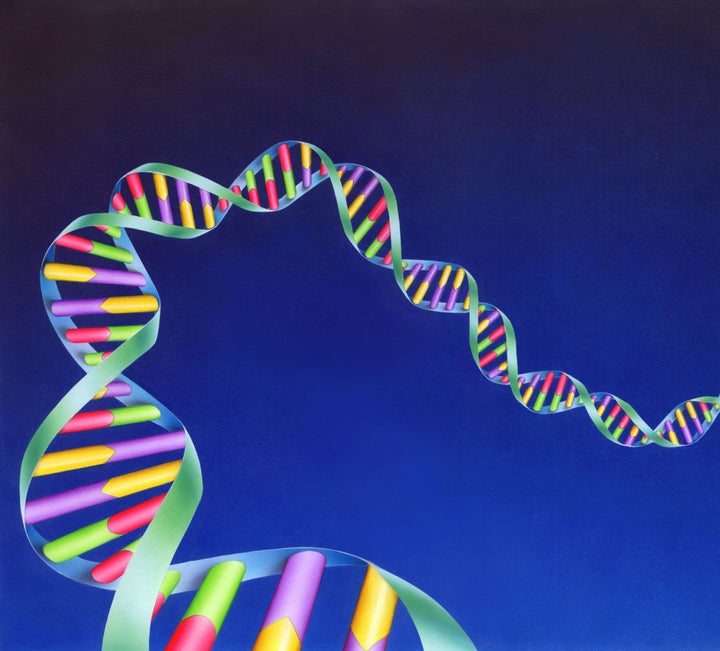
Let's face it: there's a lot of biological engineering done in bedrooms. But do-it-yourself (DIY) biologist Cathal Garvey is taking it to a whole new level. First, he assembled his own lab from everyday household equipment and a bit of ingenuity for about $4,000. Now he's doing some serious genetic engineering to help other beginner biologists tinker with the common soil bacterium Bacillius subtilis.
Garvey, recently profiled in Technology Review magazine, is one of the new breed of biologist operating in the near-empty spectrum between academia and big biotechnology companies. It's a niche economically too small for most companies to consider developing projects for and one virtually ignored by the granting agencies that support academic research. What's allowing Garvey and others like him to explore the space is a back-to-basics approach to biology combined with the Internet. The Web provides a gateway for information, supplies, and powerful outsourced technologies, like DNA sequencing.
Garvey is part of diybio.org, a diverse online community of bioscientists and enthusiasts. He makes his own equipment or repurposes common appliances, but there's no absolute requirement for doing this. There's plenty of lab equipment to be found on eBay and other reseller websites. What's perhaps more interesting than hacked equipment is that Garvey can do sophisticated genetic engineering using nothing more than his home computer. This is possible because of an emerging field called synthetic biology.
Synthetic biology is genetic engineering, only done with digital tools. DNA code is manipulated not in the lab but using computer software -- basically a specialized word processor. Once a design had been completed, the DNA code is "printed out" using a machine called a synthesizer. Right now, synthesizers are too specialized for home use, but companies like DNA 2.0 offer synthesis services at reasonable cost. The bottom line is that writing software for living things is today not much harder than writing computer software. And it's available to almost anyone.
Garvey's already done his first home genetic engineering project. It cost him about $1,300 to write a 3,200 base-pair plasmid, a genetic scaffold for others to build upon. He plans to sell copies of his plasmid, noting he won't have to sell very many to break even, and that everything after this is pure profit. The economics of writing computer software are similar. Once software is written, the cost of producing and distributing more copies is negligible. This makes the potential for bedroom biotech enormous. Arguably, it's only a matter of time before a micro-biotech creates something as popular as Angry Birds, which since its December, 2009 release has resulted in over 600 million downloads and $110M in sales.
I spoke with Garvey about his career and growth plans. The home-based biotechnology company offers him the freedom to explore biology on his own terms. He says, "Academia and industry can beat your dreams out of you; you go into science for the love of discovery or the thrill of creating something new, only to spend the better part of your life doing other people's discoveries or drudgework, in the hope of earning your own lab someday." He wants to grow organically, avoiding loans and not overextending himself.
But it's a lot of work creating a lab at home. Garvey took the time to get an EPA license for his bedroom setup. The licensing process involved writing a risk assessment for his project, outlining the facilities used, and the personnel at his facility. A biosafety committee had to be assembled, inspections done. The license was granted but special requirements were placed on the license that requires Garvey to take extra precautions and validate his sterilization procedures are working.
Not everyone is willing to go through so much trouble to work at home. Some citizen scientists have decided to band together to create community labs. Like other small biotechs, these labs operate in industrial-zoned spaces as small enterprises. There's still a lot of paperwork, but more people to lighten the load. The first such lab, Genspace, opened just over a year ago in Brooklyn. Members pay a monthly fee for access and for courses or special presentations. On the west coast, Biocurious has 2,400 square feet of lab and meeting space and operates with a similar business model.
Meanwhile, the Bay Area is also home to BIOFAB, what amounts to an assembly line for biology. Once fully operational, the BioFab facility will be capable of producing tens of thousands of professionally engineered biological parts each year, parts that can be mixed and matched to make proteins or even novel organisms. Just send the BIOFAB a genetic design and they'll build and test it.
This will free up bedrooms for the really important biology work.